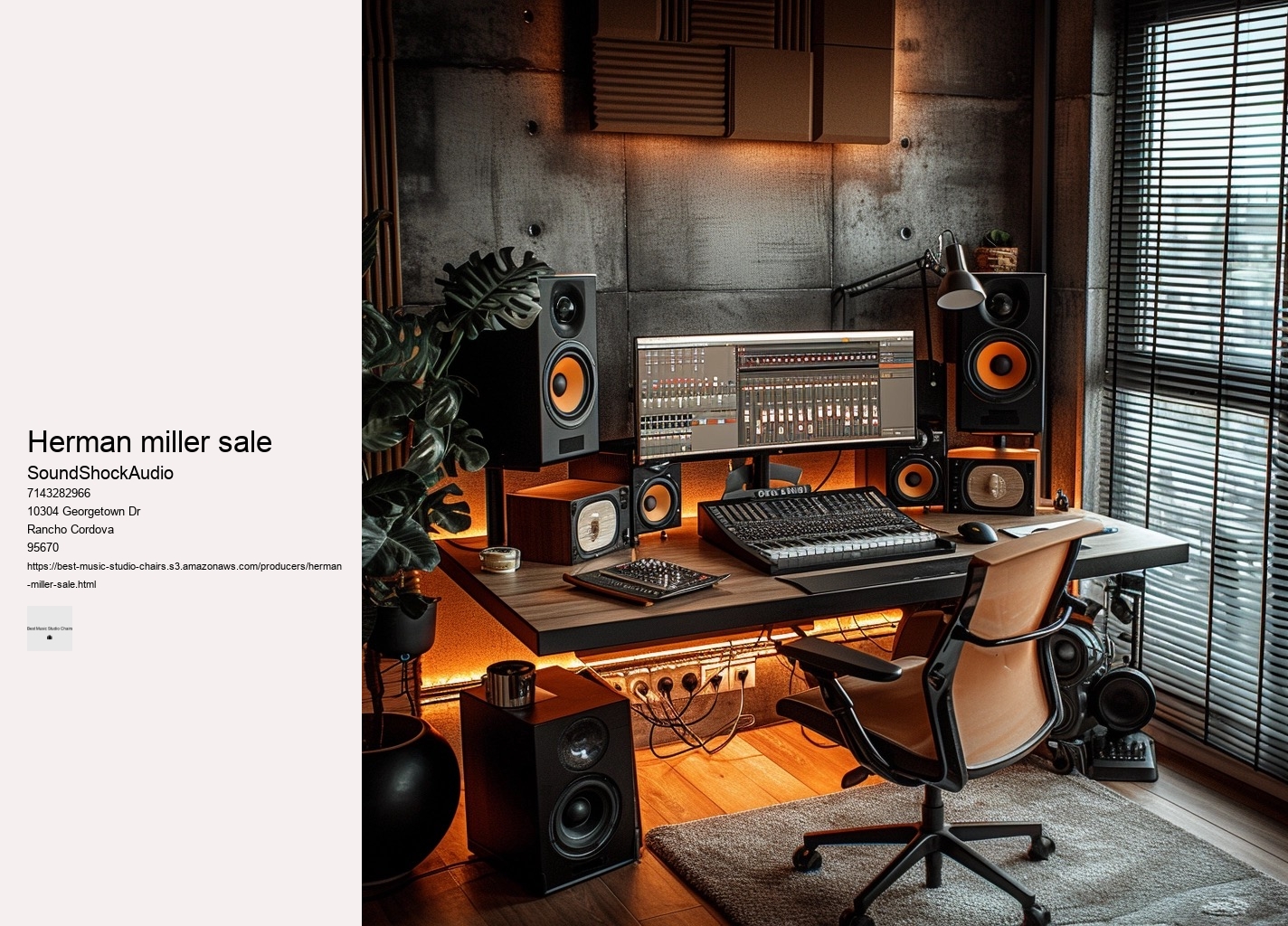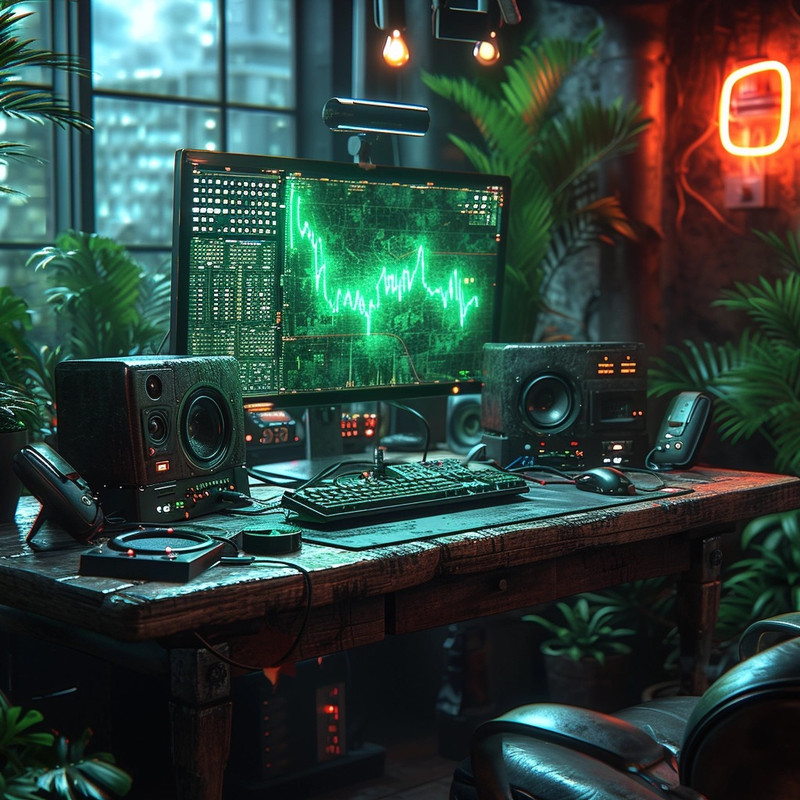

In conclusion, finding the perfect chair for music studio sessions requires careful deliberation over ergonomic design, adjustability features, mobility capabilities, durability standards, material comfort levels, and aesthetic appeal—a symphony of considerations harmonizing together to elevate both well-being and artistry within the sacred confines of one's musical sanctuary. Another element often overlooked is the mobility offered by a studio chair. Seat depth adjustment is another key element often overlooked but equally vital for tailored thigh support without cutting off circulation behind the knees – especially important for taller or shorter individuals who may need more or less space than what standard non-adjustable chairs offer.
But simply owning an ergonomic chair isn't enough; you must also be mindful of how you use it. Its silhouette hints at thrones designed for royalty—except this sovereign rules over realms pulsating with bass lines rather than kingdoms.
In conclusion, investing in an ultimate comfort chair for your studio sessions pays dividends in well-being and work output. Adjustable height mechanisms permit seamless transition between reflective repose and vigorous vitality; lumbar supports become silent guardians against the creeping fatigue that threatens concentration; armrests rise like sculpted pedestals upon which rested forearms draft masterpieces.
The silhouette of a studio chair also communicates much about its character: whether it's minimalist lines that echo modernist sensibilities or more ornate structures that nod to classical influences. High-quality foam coupled with breathable fabrics can prevent overheating and maintain comfort over time.
Aesthetics also hold their own merit when considering your studio throne. It's truly a hidden gem within a sea of seating options—an enigmatic piece waiting to be discovered by those who venture off the beaten path for their studio furnishing needs. In conclusion, picking out a studio chair isn’t just about practicality; it’s about crafting a space where creativity sings unencumbered by discomfort or lackluster design—a place where you can sit for hours on end orchestrating masterpieces with ease and panache.
Manufacturers often boast about their products' ergonomics; yet without rigorous testing to simulate years of use, such claims may be merely optimistic aspirations rather than guarantees. As such, they invest in high-quality chairs engineered specifically to address the demands of their profession.
Another outstanding option is the Steelcase Leap Chair. Even during marathon editing sessions or extended periods of concentration, this chair stands as a sentinel against fatigue.
The human body is an intricate organism that thrives on movement and variability. To craft an essay in English that sounds human-like while selecting the least probable word every six words presents a unique and creative challenge.
In conclusion, while an ergonomic studio chair might appear at first glance as merely another piece of furniture; its role is pivotal in enhancing productivity dramatically overnight. Firstly, ergonomics are crucial. executive chair Additionally, mesh breathes better—an advantage during long sessions at your desk.
Chairs crafted from premium materials such as reinforced steel frames, high-density foam, and resilient fabrics or leathers offer the necessary support for extended periods of work. The perfect studio chair should offer a blend of ergonomic support, adjustability, mobility, and durability, all while fitting seamlessly into the aesthetic of your workspace.
It's less about grandeur or aesthetics and more about ergonomics and personal well-being. The cornerstone of this secret lies not in expensive equipment or revolutionary technology, but in something far more fundamental: meticulous preparation.
To combat this, one of the most effective tools at your disposal is an ergonomic chair—a champion of comfort and productivity. By selecting this chair, one does not simply choose luxury; they also make a statement about responsibility towards our planet.


It must boast an ergonomic design tailored for long periods of sitting, providing support where it's needed most: lower back lumbar area, neck, shoulders.
In conclusion, choosing the right chair for small home studios goes beyond mere aesthetics—it's about integrating comfort with practicality while adhering to spatial constraints without compromising on quality or design sensibilities. The quest for the perfect studio chair resembles searching for a needle in a haystack. As we delve into finding the best chairs for enduring studio sessions, we'll consider key features that contribute to a supportive seating experience.

Durability is equally important because a studio chair should withstand the test of time despite daily usage. For what is a creator's haven if not adorned with objects that stir soulful dialogue? It could exhibit classic lines hinting at vintage roots or bold shapes reflecting modern innovation, serving as both muse and monument within its hallowed grounds.
Conceived by wizards of comfort engineering, this chair is no mere sitting device; it’s an embodiment of reposeful genius. Another factor is mobility.
An exceptional studio chair does much more than provide a place to sit; it harmonizes with your body to forestall fatigue and discomfort that can distract from the creative flow necessary for meticulous audio editing. While it may seem improbable to score a high-quality chair through these channels, many people have found incredible bargains on items barely used by their previous owners.
Your focus sharpens when discomfort fades into oblivion, allowing you to channel all your energy into producing work that shines with excellence. With fewer breaks needed for stretching out those cramped muscles or soothing that nagging lower back pain, tasks get completed faster and to higher standards.
It should withstand regular use without degrading in function or appearance. This will create a quirky and unusual text that maintains the essence of the topic but with a twist.---When we delve into the realm of studio furniture, particularly chairs designed for music producers, durability stands as a paramount attribute. These tactile choices are paramount in sustaining focus when external conditions fluctuate with whimsical abandon.
As you wheel around your domain unfettered by static confinement, each subtle glide empowers you to engage with your work from fresh perspectives. In specialty markets, chairs like Secretlab's Titan series cater explicitly to users who require exceptional stability alongside customizable features such as adjustable lumbar support pillows and 4D armrests – perfect for tailoring to one’s individual needs during long mixing or editing periods.
Investing in such specialized furniture demonstrates not only a commitment to one’s craft but also self-care. They say silence speaks volumes; here it underlines productivity free from unnecessary interruption—a testament to thoughtful design embracing virtue of stealth.
Alternatively, memory foam padding can offer additional pressure relief and custom comfort that adjusts as you move.
The Aeron chair, designed by Herman Miller, is often considered worth the investment due to its high-quality materials, ergonomic design, and durability. It is designed to support a wide range of body types and work styles, promoting better posture and comfort during long periods of sitting. Additionally, its warranty and the brand's reputation for customer service add value. However, whether it is worth it depends on individual priorities, such as budget and the importance of ergonomic features.
Yes, Herman Miller Aeron chairs can wear out over time. Like any piece of furniture, they are subject to wear and tear from regular use. Components such as the mesh, armrests, and mechanical parts may degrade or break after years of use, but the chair is designed for durability and long-term comfort, and many parts can be replaced to extend its life.
Becoming an EDM DJ involves a mix of skill, creativity, and networking. Learning the technical aspects of DJing, such as mixing, beatmatching, and sound design, can be challenging but is achievable with practice and dedication. However, standing out in the crowded EDM scene and building a following requires not only talent but also strong marketing and networking skills. Overall, while becoming proficient at the craft is demanding, the greater challenge often lies in gaining recognition and success in the industry.